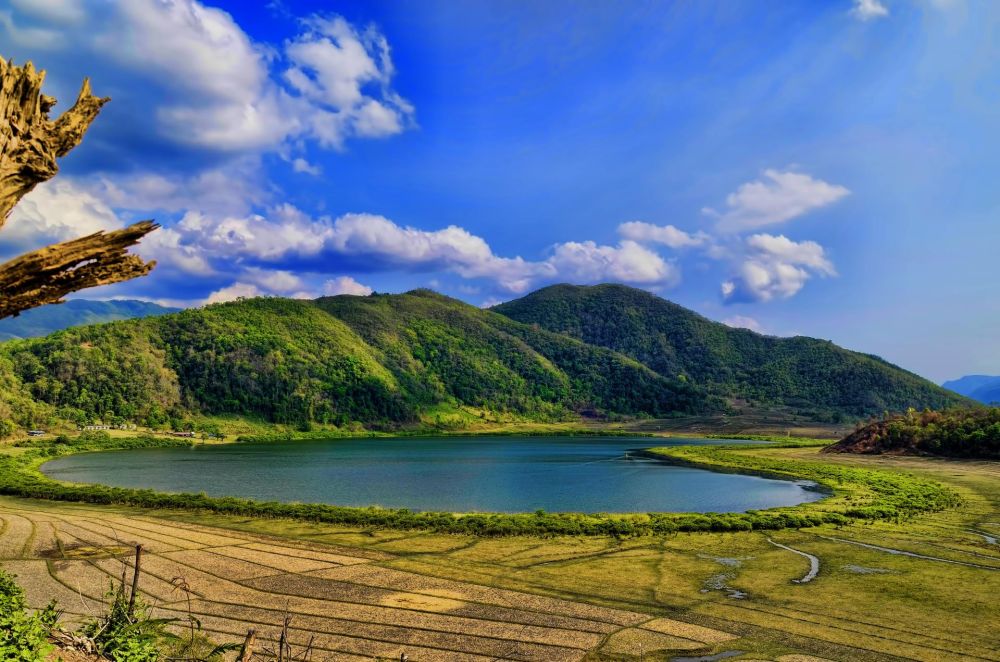

Situated in the heart of Mizoram, India, close to the India-Myanmar border, lies the mystical Rih Dil Lake. This heart-shaped lake, ensconced amidst verdant hills, has a romantic lore that transcends the geographical boundaries and resonates with the local Mizo folklore.
Rih Dil has a deeply rooted significance in the cultural ethos of the Mizos. According to local legend, it is believed to be the passage to the eternal abode, known as Pialral. For centuries, the lake has been a subject of many traditional songs, stories, and poems.
The history of tourism in Rih Dil has been interwoven with the rituals and lives of the Mizos. Traditionally not a tourist hotspot due to its remote location and the sensitive nature of the international border, Rih Dil has gradually grown in significance as a tourism destination.
The tranquility and the awe-inspiring beauty of Rih Dil initially attracted the locals who visited the lake as a pilgrimage site. It wasn't until the late 20th century that Rih Dil began to gain popularity among domestic tourists. The opening of borders and the easing of restrictions by the Government of India and Myanmar have since contributed to the growth of tourism in the region.
With the advent of the 21st century, Rih Dil has seen changes in tourism trends.
To visit Rih Dil, tourists require special permits as it is just within the Myanmar territory. The closest Indian town is Zokhawthar in Champhai district, from where you can undertake a journey to the lake. Many local tour operators assist with logistics and permissions. The lake is most accessible during the dry season, from November to March.
Aside from its stunning beauty and serene surroundings, the cultural heritage and the myths surrounding Rih Dil are what truly capture the hearts of those who visit. Its emergence as a tourism destination in the recent past is a testament to the allure that this enchanting lake holds.
Conservation efforts are also underway to preserve the natural beauty and cultural integrity of the lake. Promotion of responsible tourism practices is encouraged to ensure that the lake and its surroundings remain untouched by the adverse effects of modern tourism.
In conclusion, Rih Dil Lake remains one of the lesser-known but increasingly popular destinations in Northeast India, offering a blend of natural beauty, cultural richness, and a serene getaway for those looking to escape the hustle and bustle of city life.